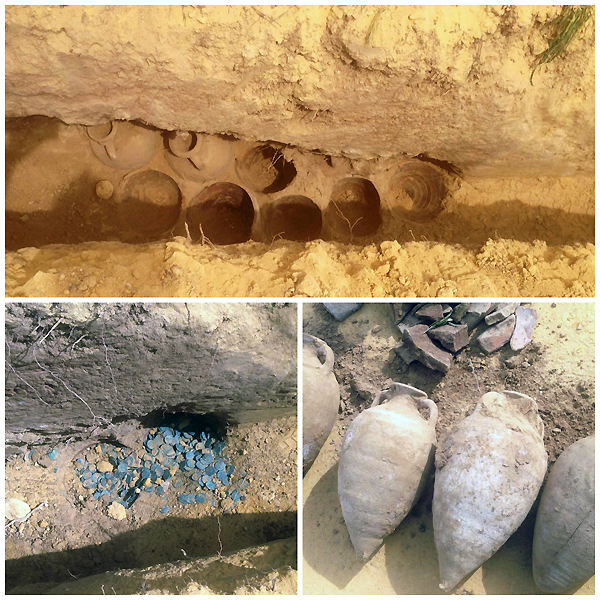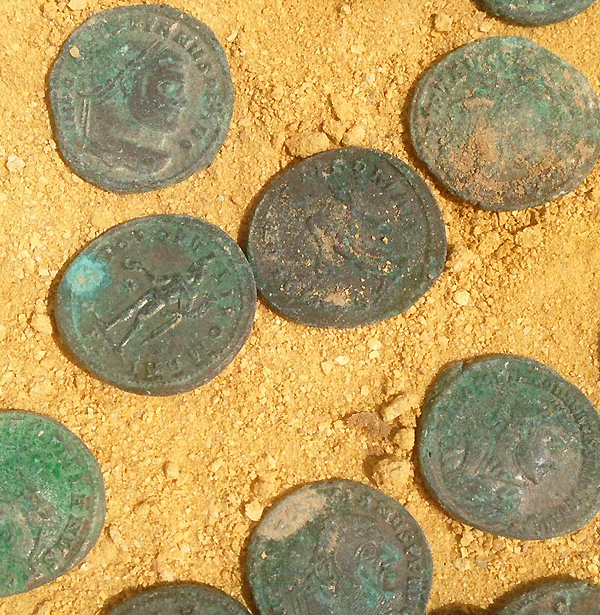Hoard of Roman coins uncovered near Seville

Amphorae insitu containing the Roman Coins found in Tomares Photo: Ayuntamiento de Tomares
Huge excitement here in Seville recently, when an extraordinary hoard of Roman coins was discovered in a park near the city.
Workmen were digging a trench to lay pipes using a digger vehicle in the Parque Zaudin in Tomares on Tuesday last week, when the machine's scoop hit something which sounded unusual. They paused their work, removed the earth and found Roman amphorae (clay pots) full of bronze coins buried just 1 metre under the ground.
In this area, with its layer upon layer of history from the Phoenicians to Visgoths to Moors, Roman coins are not that uncommon. The Aljarafe ("high ground" in Arabic) region to the east of Seville was once home to many thousands of legionnaries, with the first Roman city built outside Italy, Italica, just a few kilometres away.
What makes this find so rare, and of such incalculable value, is the quantity of money found - 19 amphorae in total, weighing 600 kilos - together with the fact that the coins are newly-minted; it's thought they had never been used, as they don't have scratches or other signs of wear, which means they are extremely well-preserved.
Indeed, ten of the amphorae, which are of a smaller size than those used for olive oil or wine, were found intact with the coins still inside; the others were damaged while the trench was being dug.

Close up of the Roman Coins found in Tomares Photo: Ayuntamiento de Tomares
"It is a unique collection and there are very few similar cases," said Ana Navarro, director of Seville's archaeology museum. "I could not give you an economic value because the value they really have is historical and you can't calculate that."
It is thought that such a sizeable load of unused coins has never before been unearthed, either in Spain or anywhere else in the world.
The coins are made of bronze, and bear the images of Roman Emperors thought to be either Constantine or Maximian, dating from the late 3rd to early 4th century AD. El Pais has said that they have "various Roman allegories" on the back, including abudance.
Such was the level of interest in our little corner of the Aljarafe - the park is about 5km from where I live - that the news went worldwide, making the BBC, Guardian, CNN and Washington Post.
The coins might have been destined to pay taxes to the Empire, or alternatively as salaries for the Roman legions or civil servants here in Spain.